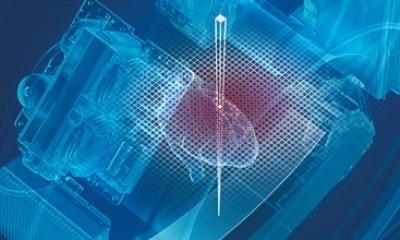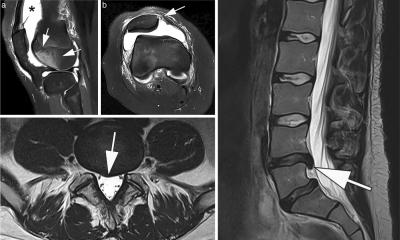© University Hospital Essen
Article • Delivering more efficient healthcare
How teleoperation is changing radiology
As opportunities for teleoperations rapidly expand within radiology, the concept is being deployed across an array of modalities to deliver more efficient healthcare. A range of speakers covered the topic of ‘Teleoperations in radiology’ at ECR2024, discussing its benefits in applications in MRI, ultrasound, during the social restrictions of the Covid-19 pandemic and military use. However, challenges remained: radiographers and radiologists were initially slow to accept and adopt the concept, there were cost and technical obstacles, and concerns over a loss of direct contact with patients.
Report: Mark Nicholls
With a range of real-world examples within clinical practice and education, speakers highlighted how teleoperations is making a difference in the way they operate and deliver care to patients. In his introduction to the session, chair Borut Marincek pointed to the World Health Organization definition of telemedicine as ‘delivery of health services using digital technologies to overcome distance barriers’ and that teleradiology now accounts for at least 50% of telemedicine usage.
A former chairman of the Department of Diagnostic Radiology at Zurich University Hospital, he said recent radiology and health congresses had highlighted the value of teleoperations in solving personnel shortages. But he also pointed to challenges to implementation: a lack of worldwide regulatory standards; costs; and a changing work culture. ‘It is paramount that the view of radiographers is taken into consideration when implementing this new technology,’ said Marincek, adding that a survey among radiographers on teleoperations is planned.
Cautious approach

Anton Sheahan Quinsten, senior radiographer at University Hospital Essen, Germany, outlined his centre’s experiences of remote MRI scanning, noting that ‘remote scanning is the most discussed topic among radiographers.’ While radiographers are adaptive to new technologies, he conceded an element of caution remains within the profession on the subject.
The backdrop is also challenging: increased demand for imaging, an ageing demographic, and a lack of radiographers with vacancies across most hospitals in Germany and an expectation that half of radiographers will retire between 2030 and 2040. In addition, his hospital is spread across a large campus with 50 institutes and clinics and patients meaning time spent having to get to different areas if colleagues need support.
What was needed was a software solution all scanners remotely with MR operations separated into three processes: patient management, exam management, and quality management. Given the serious shortage of radiographers in Germany, it was realised that highly-qualified radiographers were not required for patient management (i.e. patient positioning) and staff could be better deployed, leading to a ‘cockpit’ solution’ with radiographers in a separate room with screens locked in to all the modalities across the campus. ‘Today, our radiographers routinely work from home, with three screens and able to perform three scans simultaneously,’ added Quinsten, who during the Covid pandemic became the first person to perform an MRI examination remotely from home. The system is so flexible, he added, that the MRI scanners can be operated from any location at any time.
There were initial ‘human and technical’ challenges when remote scanning was introduced. Some senior staff resigned, though they have since returned as remote technologists. His department has now scanned 50,000 patients remotely and since 2023 has deployed a cloud-based solution. ‘We have seen that remote scanning has huge potential in the hospital,’ he said. ‘We can operate all our modalities with fewer radiographer than in the past.’
A technologist in a cockpit centre can share their knowledge, training time for new radiographers has been reduced by half, radiographers can scan from home and experienced older personal who are less mobile can return to their profession. Quinsten added that on-site radiographers have more time to prepare patients, images can be shared live with other departments and research can be supported. Patients benefit because they do not have to travel for specialist exams and can go to a radiology department closer to home.
Radiologists working in a central hospital can interpret the images obtained in an elevated number of remote patients, thus increasing efficacy, while reducing transport costs
Vito Cantisani
Professor Vito Cantisani, Vice-Dean of Medicine and Dentistry at the University of Sapienza in Rome, focused on teleoperations in ultrasound and how it can help remove geographical barriers and resolve staff shortage problems in hospitals. ‘Radiologists working in a central hospital can interpret the images obtained in an elevated number of remote patients, thus increasing efficacy, while reducing transport costs,’ said Cantisani, who emphasized the importance of specialized training and formal certification and the need for high-end technology.
He concluded: “Telerobotic ultrasound may successfully answer clinical questions in most cases, allowing patients to receive imaging in their home community and in remote and rural areas where hospitals or imaging centres are not available.’ He said it also helps in areas lacking experienced radiologists, while pre-hospital tele-ultrasound may reduce time to diagnosis and improve patient treatment or referral times.
Expanded applications
The session also heard how teleoperations are supporting the military. British Army radiologist Dave Muchena examined the pros and cons of teleradiology in defence medicine, acknowledging it as an ‘excellent and cost-effective tool for clinicians in austere environments’, but there can be a lack of face-to-face contact and issues of miscommunication.
Dr Ricardo Teresa Ribeiro from the University of Applied Sciences and Arts (Western Switzerland) discussed remote imaging as a means to support radiographer and radiologist education, while Patrizia Cornacchione from the Catholic University of Sacro Cuore highlighted experiences of implementing a televisits system for cancer patients during the Covid-19 pandemic. She said: ‘The swift deployment of a telemedicine system, even in the context of a pandemic emergency, is both feasible and well-received by patients. Initial experiences pave the way for expanded telemedicine applications within radiation oncology.’
Profiles:
Anton Sheahan Quinsten is senior radiologist at University Hospital Essen and Deputy Chairman of the Radiographers Board in Germany. He studied business informatics and his field of research is Artificial Intelligence in radiography. He is author of the book Information Technology and Artificial Intelligence in Radiology.
Vito Cantisani is Professor of Radiology at the University La Sapienza in Rome with specific interests in multiparametric ultrasound, contrast media and in abdominal and vascular imaging. He is also President-elect of the EFSUMB (European Federation for Ultrasound in Medicine and Biology).
18.07.2024










